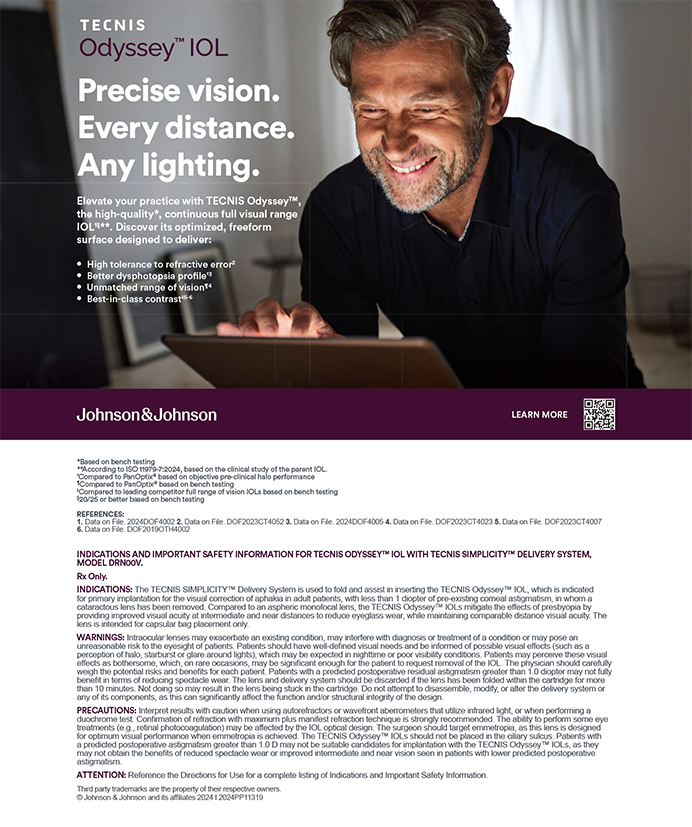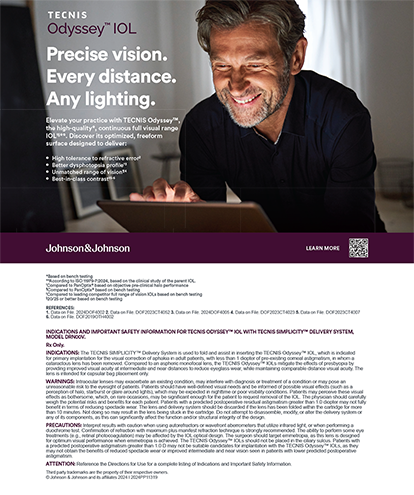Why did you decide to become an ophthalmologist and to subspecialize in refractive surgery?
I decided to pursue ophthalmology during my third year in medical school. An intern who was supervising my rotation recommended that I look into ophthalmology, because it encompassed the microsurgery I was interested in. At that time, ophthalmology residency applications in Canada required a 2-year lead time, so I applied and was accepted in ophthalmology prior to knowing where I was going for my internship. After finishing my residency and deciding to pursue a corneal fellowship, Stephen Drance, OC, MD, who was the chairman of ophthalmology at the University of British Columbia at that time, suggested that I look into a refractive surgery fellowship at Louisiana State University with Hebert Kaufman, MD, and Marguerite McDonald, MD. I completed the fellowship in 1989. During that time, Dr. McDonald was performing the first excimer PRK treatments in the United States. I returned to Canada 1 year later with this training and decided to subspecialize in refractive surgery.
How is your practice in Canada different from those in the United States?
My practice in Canada is different from those in the United States in that I have been able to perform PRK without restriction since 1991. The lasers and software were approved in Canada 2 to 4 years ahead of the United States. Therefore, I was able to perform wavefrontguided treatments and topography-guided treatments in Canada prior to my counterparts in the United States. As a result, I have been able to subspecialize in refractive surgery since 1994.
Can you share an update on your research into improving predictability in topography-guided LASIK to treat small and decentered optical zones?
My partner and I have greatly improved the predictability in topography-guided treatments. We have developed a customized topography neutralization technique (TNT) algorithm to reduce the unpredictable results inherent in the software. The software only adjusts for topographic irregularity. It does not measure or compensate for refractive error. Customized TNT adjusts for the refractive error induced by topographic smoothing. This adjustment is then added to the total refractive error to arrive at an overall—more predictable—treatment plan.
What is the focus of your currenMy current research?
My current research focuses on customized TNT and topographic-guided treatments coupled with corneal collagen cross-linking for keratoconus. Applying customized TNT and locking these corneas with crosslinking for keratoconic eyes has been challenging and gratifying. In fact, my most recent challenging case was treating an ectatic eye with customized TNT and crosslinking. It was a challenge to map four reproducible topographies in a very distorted eye and come up with an algorithm for predictability. My partner and I were able to perform customized PRK, and the patient had a postoperative result of functional vision.
What do you like best about living in Canada, and what are your thoughts on Canada’s hosting the 2010 Olympics?
I love the quality of life in Canada. I live in Vancouver, British Columbia where I am 1.5 hours away from world-class skiing in Whistler, British Columbia, which was the site of the 2010 Winter Olympics. I can ski in Whistler one day and be back in Vancouver to golf the next day. The air is clean without pollution. We have top-notch restaurants with some of the best Chinese food in the world. Most importantly, the people in Canada are friendly, and we have progressive social and foreign policies. Year after year, Vancouver is voted one of the top 10 places to live in the world, so it is great that Canada could showcase Vancouver and Whistler to the world during the Olympics. However, there is a price. Canada accumulated an estimated debt of several billion dollars that will have to be paid off by the taxpayers. The extra traffic congestion during the Olympics was also a negative, but overall, I still think it was good for Canada to host the Olympics. In fact, I have operated on several members of Canada’s Alpine Ski Team.


